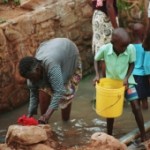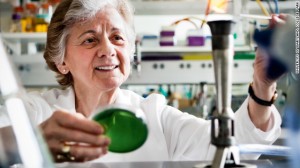Does clean water matter? An updated meta-analysis of water supply and sanitation interventions and diarrhoeal diseases. Lancet, June 17, 2013.
Rebecca E Engell, Stephen S Lim
Background – There is conflicting evidence on the effect of water and sanitation interventions on diarrhoeal diseases. Quantification of their impact is complicated by the different comparison groups used across epidemiological studies and the combination of interventions examined under the umbrella of improved water or sanitation.
Methods – We conducted an updated review of epidemiological studies on the effect of water and sanitation interventions on self-reported diarrhoea episodes. We supplemented existing reviews with a Google Scholar search for studies published between 2010 and March, 2012. 84 studies were used in a meta-analysis that was designed to adjust for intervention and baseline group characteristics. First, we compared indicator variables for each intervention component (improved sanitation, hygiene, point-of-use water treatment, source water treatment, and piped water) with a reference category (improved water source). Second, we also included indicator variables for the baseline characteristics—ie, whether the baseline was an unimproved or improved water source or sanitation—as covariates to account for the heterogeneous control groups. Subanalyses were conducted to investigate differential effects by type of intervention and age.
Findings – Significant effects were found for both improved water and improved sanitation relative risks: 1·34 (95% CI 1·02—1·72) and 1·33 (1·02—1·74), respectively. We did not find significantly greater effects of piped water or source water treatment compared with improved water supply (p=0·50 and p=0·65, respectively) or significant effects by age (p=0·19). Furthermore, we found no difference in point-of-use interventions when blinding was taken into account (p=0·08). Unimproved water and sanitation together accounted for 0·9% (0·4—1·6) of global disability-adjusted life-years in 2010, ranking 22nd and 26th, respectively, in terms of top global risks. These proportions are substantially smaller than 6·8% in 1990, and 3·7% in 2000, estimated in previous Global Burden of Disease studies for water, sanitation, and hygiene combined.
Interpretation – Our reanalysis of quasi-experimental and experimental studies suggests much smaller impacts of water and sanitation interventions than previously thought. Given the emphasis placed on these interventions in improving livelihood, continued epidemiological research to assess the full effects of such interventions remains imperative.






